How Tourism is Shaping the Identity of Indigenous People
Canaima National Park in Venezuela is the spiritual homeland of the Pemón people. The Angel Falls, the world’s highest waterfall, and the majestic table mountains attract more and more visitors from around the world—putting increasing pressure on the indigenous culture and its traditions.
The clouds hang like a veil over the Tepuis—those ancient table mountains that rise majestically from the vast green expanse of Canaima National Park. A canoe, carved from a single tree trunk, glides along the Río Carrao. Inside, a group of tourists is accompanied by Kaikö, an indigenous tour guide. His gaze sweeps over the forest. "The spirits of nature are watching us," he whispers, pointing to the towering trees. For the Pemón, who have lived here for generations, this UNESCO World Heritage site on the border with Guyana and Brazil is more than just an impressive landscape; it is their home and a source of spiritual identity. Every river, every tree, and every rock is sacred to them. What is sacred to the Pemón is an attraction for tourists. While visitors take photos and seek adventure, the cultural heritage and identity of the Pemón are increasingly under threat.
Rising Visitor Numbers, Declining Traditions
With its ancient table mountains and the world's highest waterfall, Angel Falls, Canaima National Park is one of Venezuela’s top travel destinations. Despite the country’s severe political and economic crisis, the park attracts around 30,000 visitors annually, and the numbers are growing. New accommodations, known as posadas, are being built, and infrastructure is expanding. Tourism creates jobs and income, but it also introduces foreign values that threaten the traditional culture of the indigenous population.
Kaikö has been guiding visitors through the park for over ten years. With visible sadness, he watches as the traditions of his community fade. "Many young people now work in tourism; they no longer have time for the old customs," he says, his gaze lost in the dense jungle. He recounts an old tradition: the Pemón once averted their eyes when near the Tepuis, as it was considered disrespectful to look directly at the ancient sandstone formations. "Today, hardly anyone follows this tradition," he says. The Western world and its economic opportunities have become too tempting. Kaikö’s words are reflected in a brief encounter. When the tourists’ boat stops at a small island, they meet a group of Pemón children. One boy immediately lowers his gaze, covering part of his face with his arm as he speaks to the foreigners. The others, however, look the visitors straight in the eye. Kaikö explains that in the past, children would always avert their eyes and hide their faces when speaking to tourists. "It was an important part of our upbringing," he says. "It was meant to show respect." Another value that is increasingly being lost.
Tourism as a Contested Source of Income
For many residents of Canaima, tourism has long become the primary source of income. The earnings far surpass traditional livelihoods such as fishing, farming, and gathering forest fruits, which sustained their families for generations. Juan (38) also made the switch. Until 2012, he made a living selling fish, but when he saw how much more his friends earned in tourism, he decided to change careers. "Today, I earn nearly ten times what I used to," he says, recalling the days when his income was barely enough to support his family. But competition in the tourism sector is growing, and everyone is trying to secure their share of visitors. With his savings, Juan hopes to build a larger boat soon, allowing him to transport even more tourists.


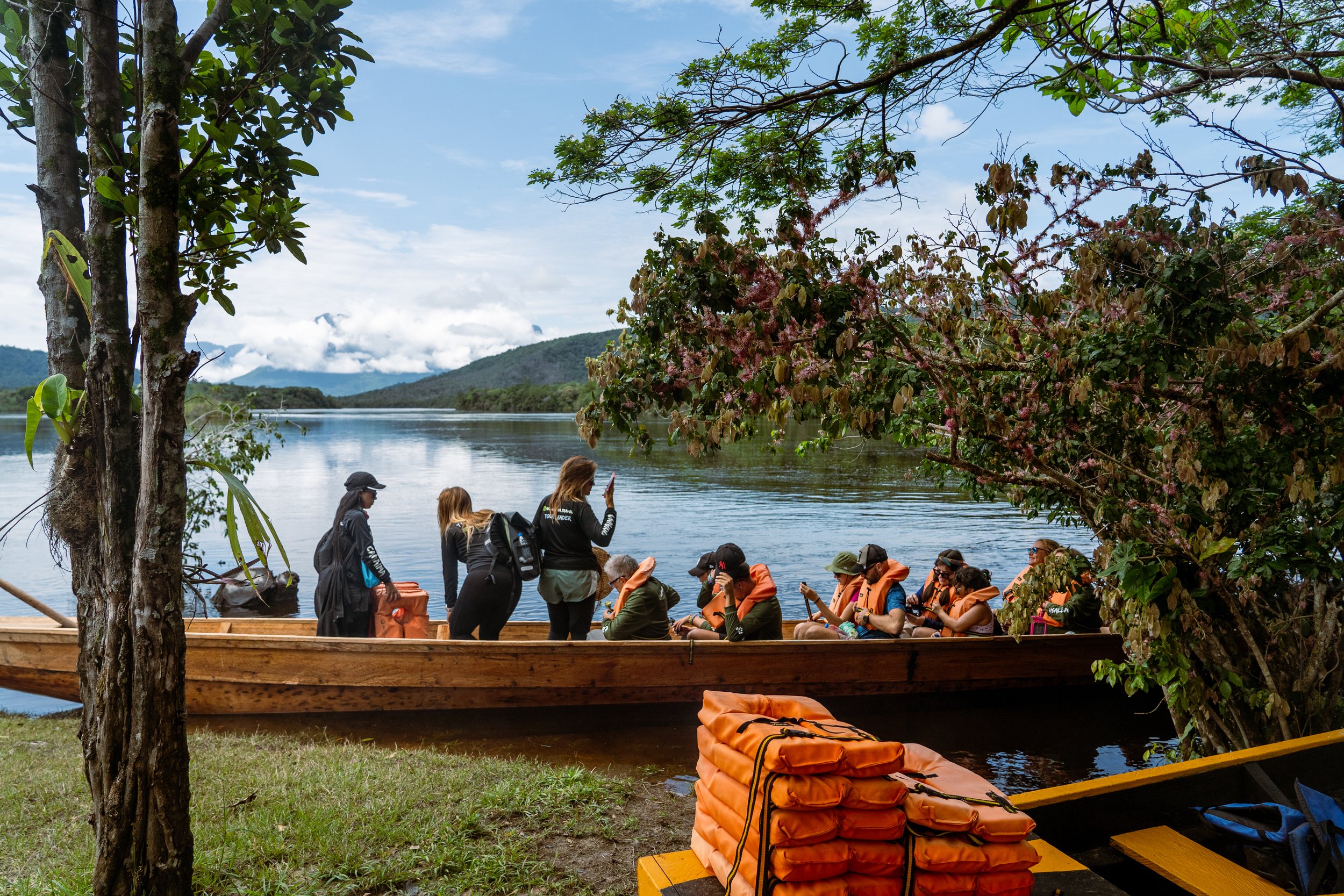

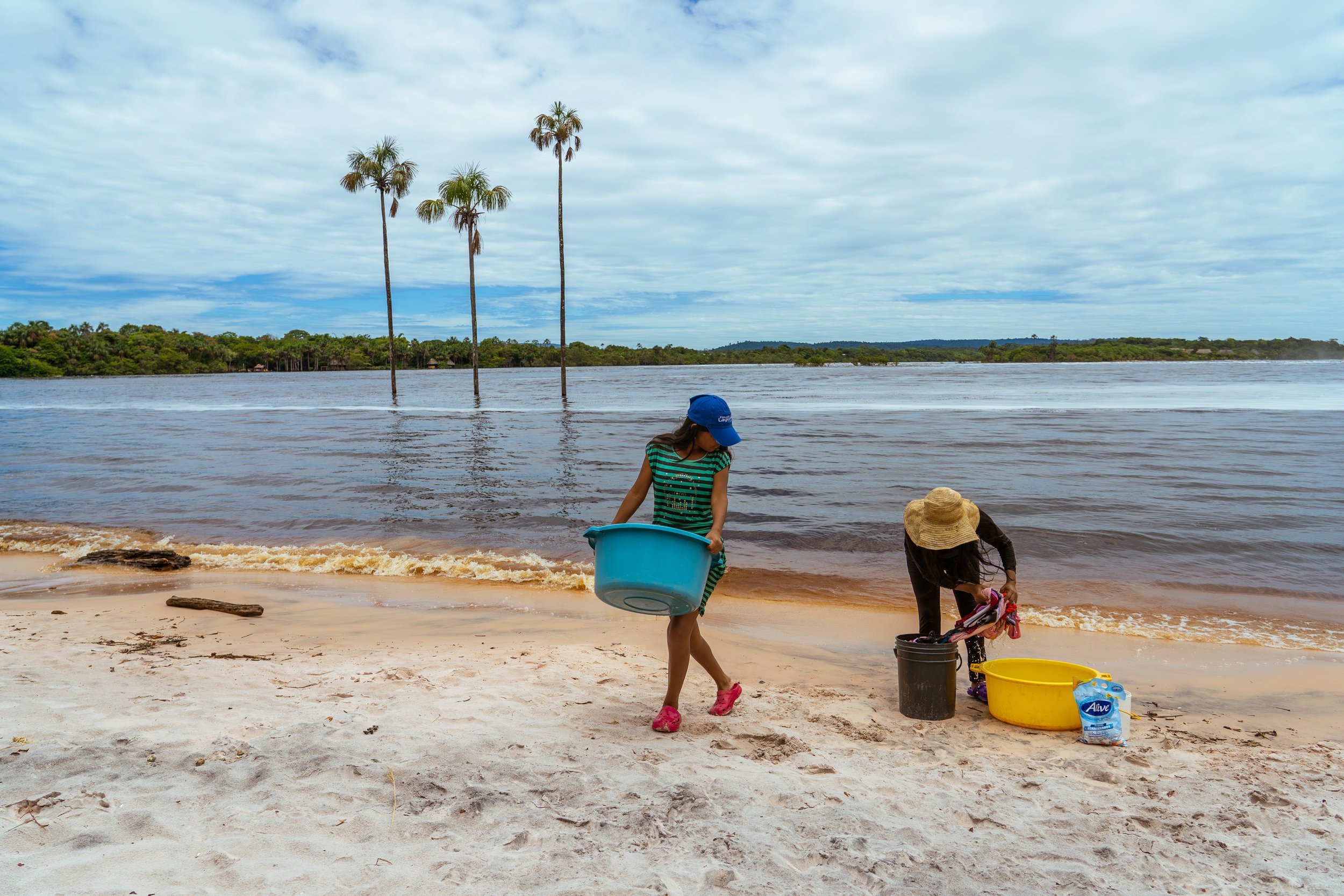
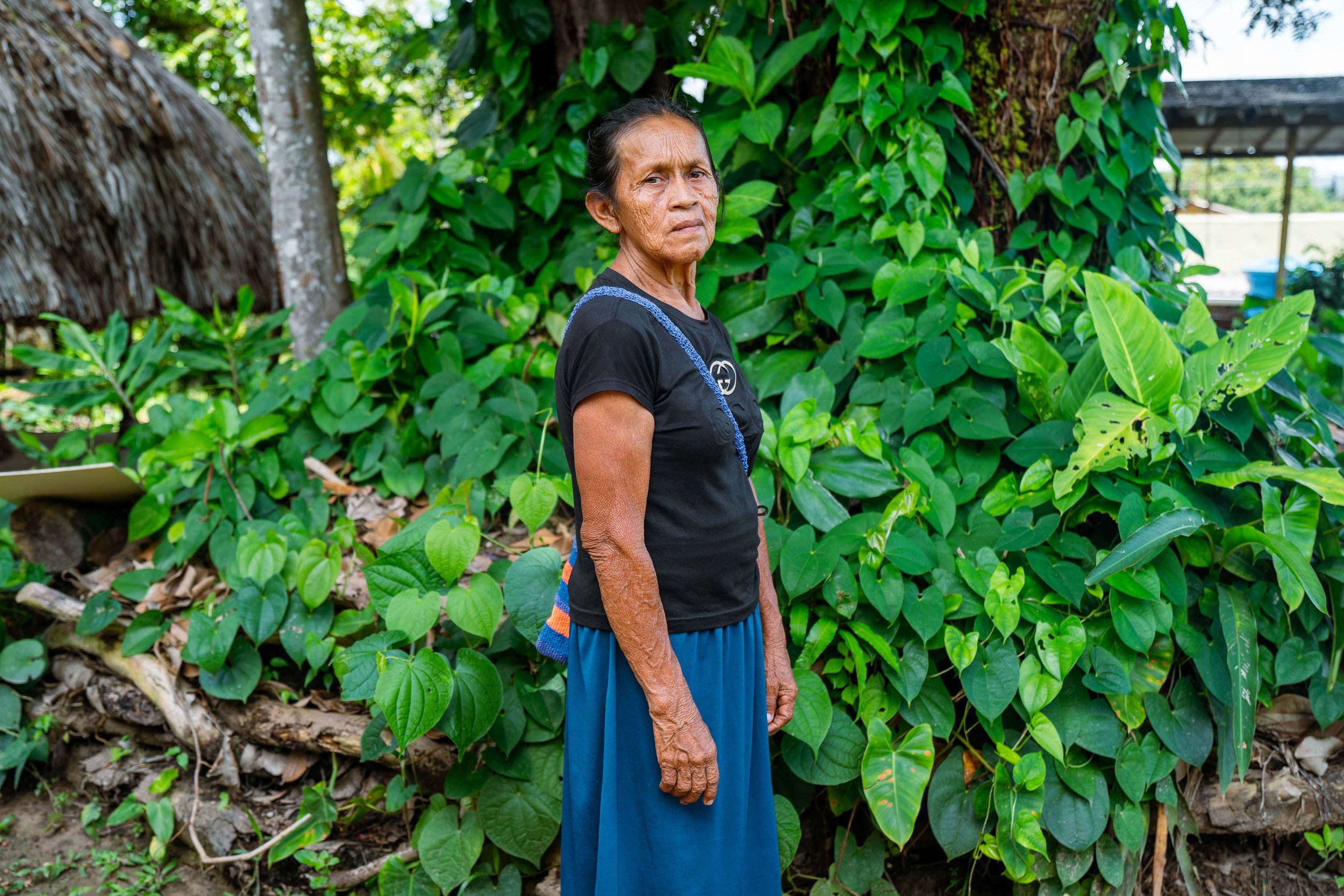
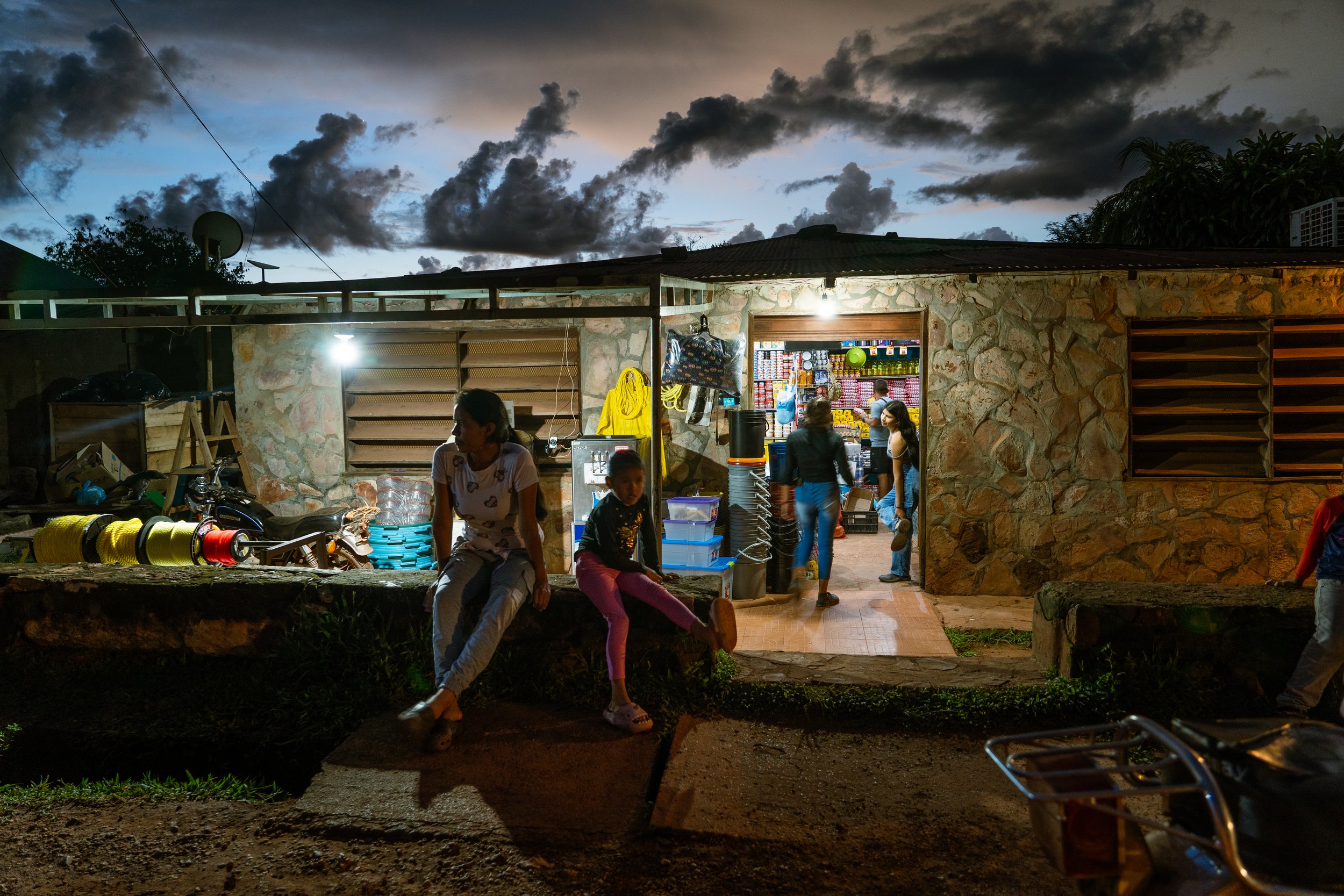
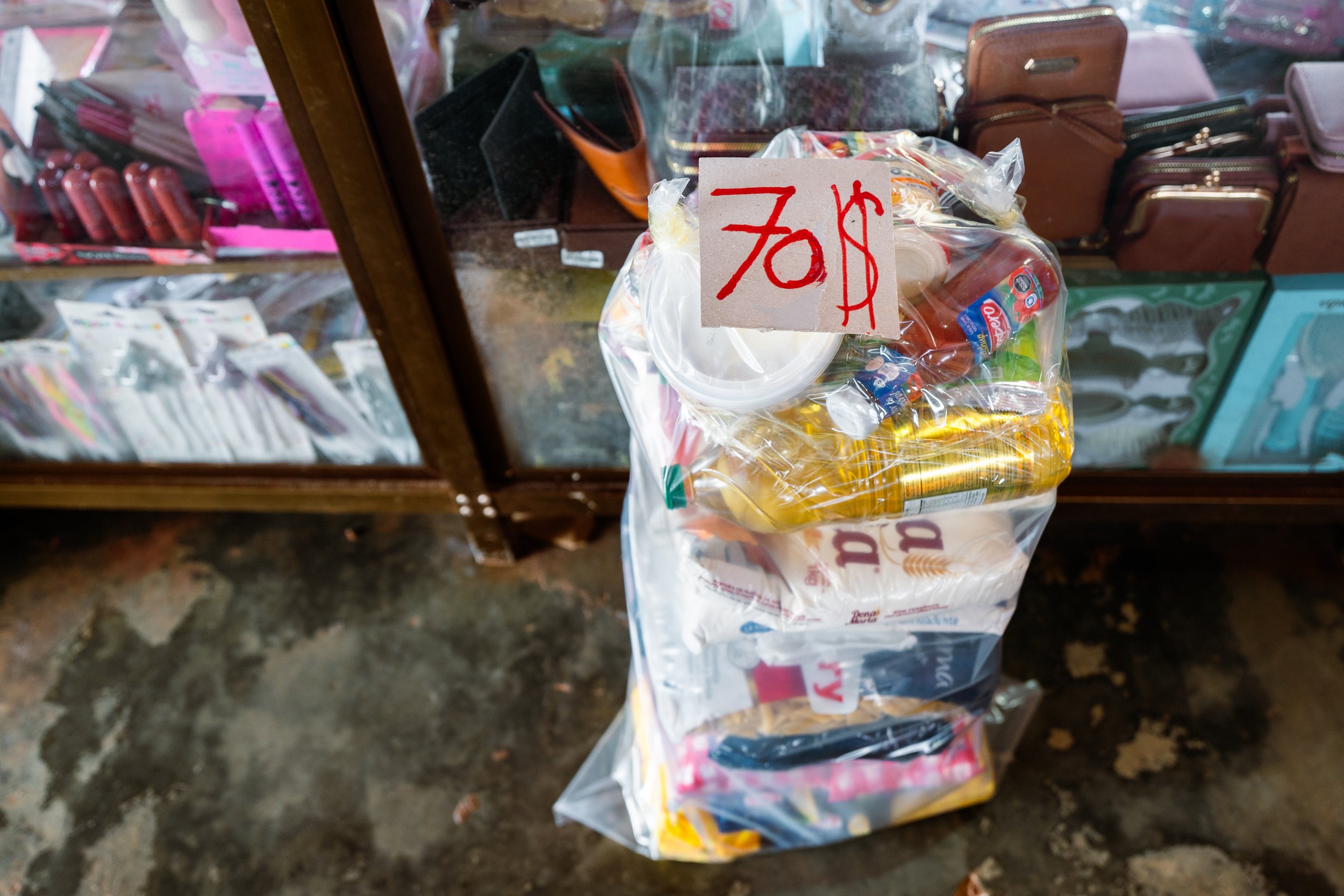

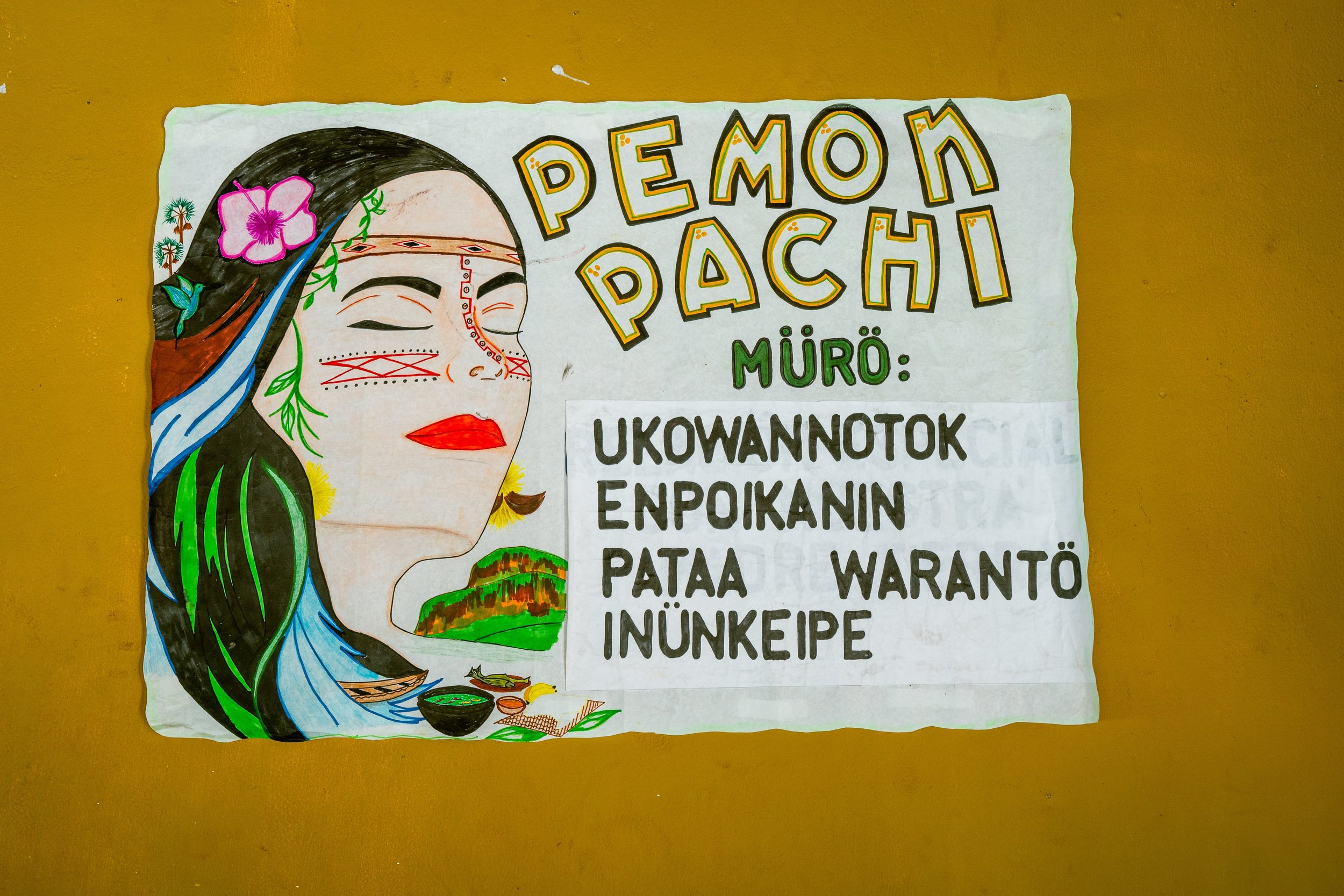
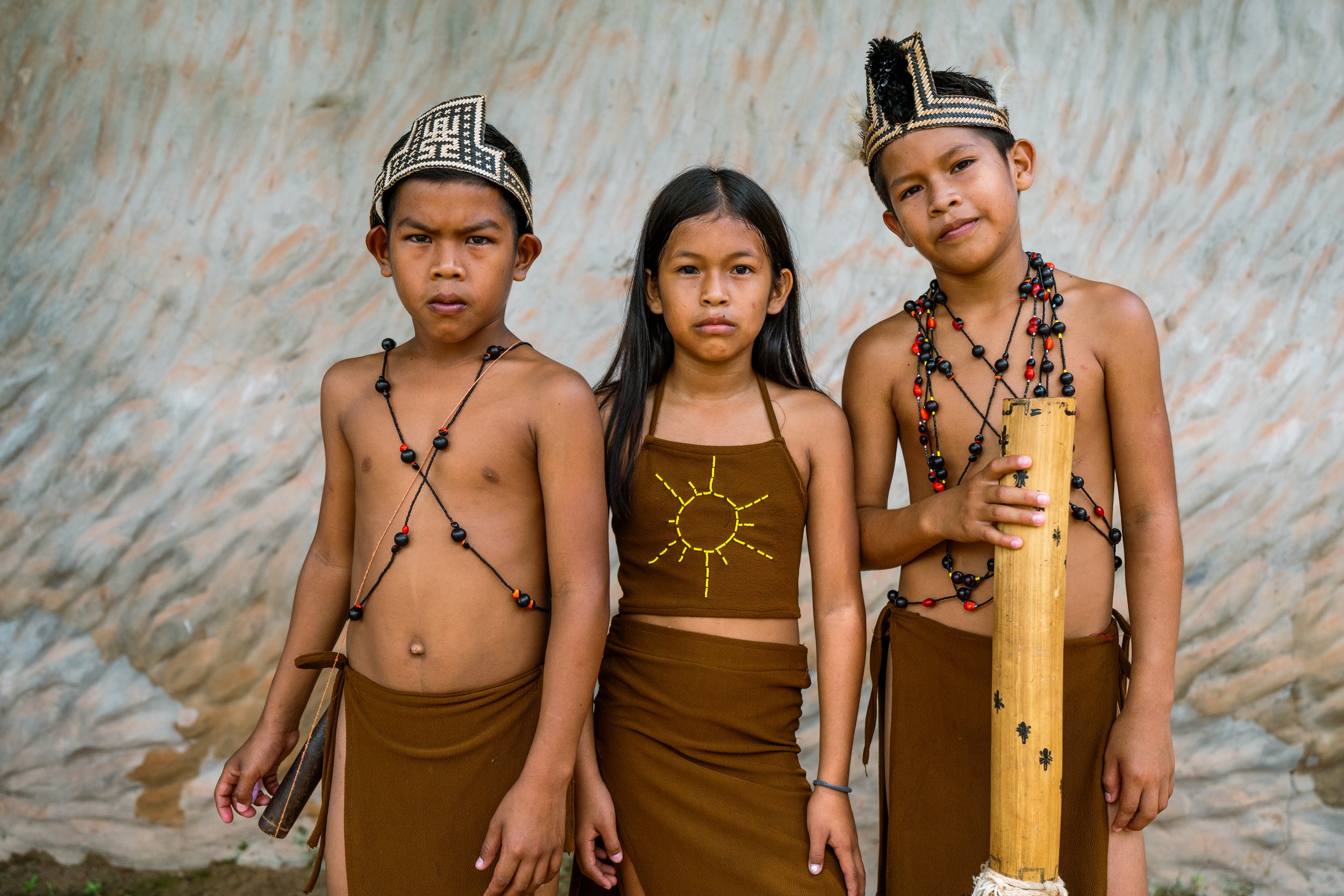

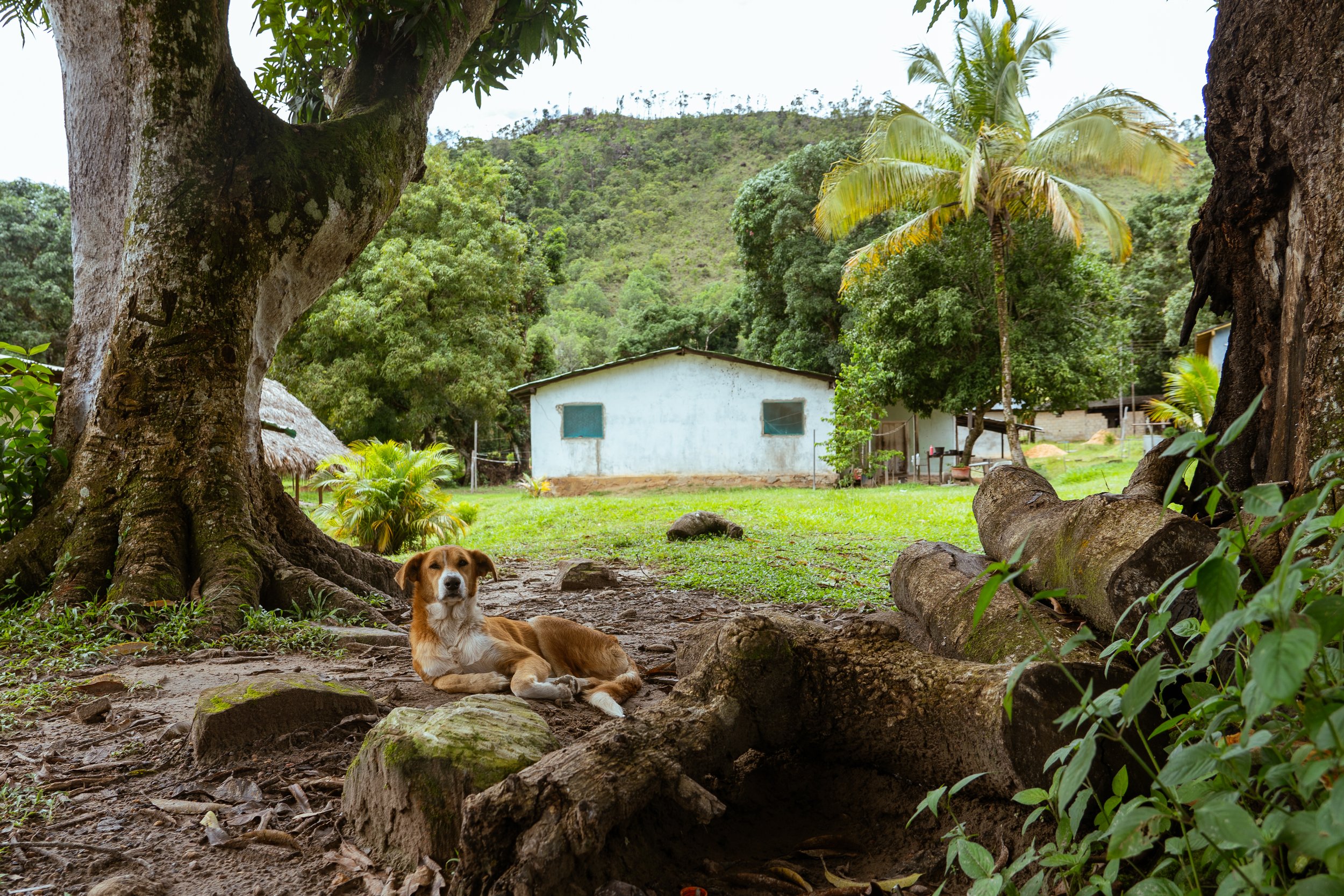
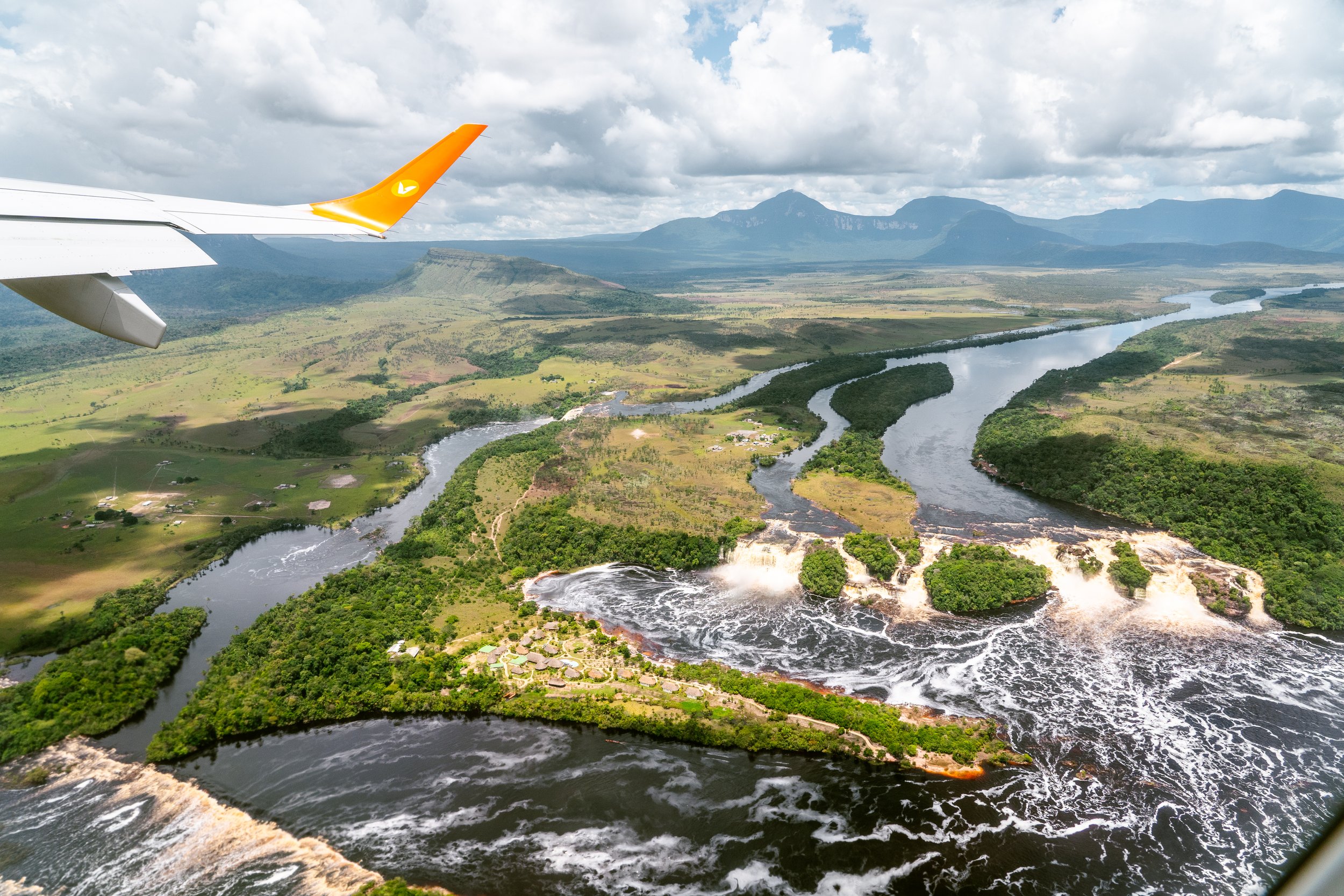
"Let My Drum and My Bambú Roar Like a Young Tiger"
For many, tourism has become a means of survival—but it is changing more than just their income. Rosa Betis, cultural coordinator of the Pemón community, sees daily how deeply it affects their traditions. To help preserve them, the former teacher organizes regular dance and music evenings for tourists, keeping Pemón traditions alive. She is also actively engaged in fighting other threats to the national park, such as illegal mining activities. Shortly after sunset, children in the village’s community hall perform a traditional dance, wearing feathered headdresses and wooden necklaces. They sing ancient Pemón songs, accompanied by handmade instruments like the Baronga—a wooden percussion instrument. "Kaikuse mürepe etununkö uvayiri kamayiri," they sing, which translates to, "Let my drum and my Bambú roar like a young tiger." The Bambú is a percussion instrument made from bamboo.
For tourists, it may be an entertaining spectacle, but for Rosa, it is about much more than just a performance. "It is our duty to preserve these traditions," she says firmly, watching the dancing children. "If we do nothing, our language and culture could disappear in just a few decades." The growing alienation is something Rosa witnesses every day. Young people prefer to move to the cities or feel ashamed to speak their native language. "Many think it’s backward to use our language," she says. But with every lost word, valuable knowledge about nature and spirituality—knowledge that has shaped Pemón life for generations—is also disappearing.
Children Caught Between Cultures
This struggle is particularly evident among the younger generation. For Pemón children and teenagers, it is becoming increasingly difficult to bridge the gap between old traditions and the modern world. They grow up in a cultural tension: on one hand, they are proud of their heritage, passed down from their grandparents; on the other, they are drawn to the stories tourists tell about the exciting world beyond Canaima. "It’s nice here," says Santiago (9) after his performance, "but sometimes it gets boring." He dreams of visiting places like Margarita Island or Mérida—far from the isolation of his hometown. Santiago and his friends Valerie (9) and Christofer (11) admit they only partially understand the Pemón language. Spanish dominates their daily lives—at school and when interacting with tourists.
Kaikö, Christofer’s uncle, is concerned about their fading ability to speak Kamarakoto, their dialect. "It’s crucial that children learn our language from an early age," he insists. He worries when he sees his siblings speaking Spanish to their children. "I argue with them about it," he admits. For him, the native language is more than just communication—it is the key to cultural knowledge and heritage. Spanish and English may be important for school, but at home, he insists, only Pemón should be spoken.
"A Pemón Never Goes Hungry"
On the International Day of Indigenous Women, Rosa Betis organizes a gathering to celebrate the strength and role of Pemón women. Women from the region, including Carmen (64), have gathered in the village hall to listen to speeches about their culture and rights. Carmen speaks only Pemón and lives by the traditional values of her community. In her remote village of Kamarata, six hours by boat from Canaima, she still tends her Conuco—a small plot where she grows yuca, bananas, and sugarcane, as generations before her did. But she watches with concern as Pemón culture changes. "A Pemón never goes hungry," she says, "because we have learned to provide for ourselves."
However, today, more and more food is bought from local stores, where imported products like Nutella and processed goods are becoming increasingly common. Carmen also criticizes the shift in education. "Our traditional education system isn’t about learning in four walls with a teacher," she explains. Pemón children traditionally learned through direct connection with nature. But as national schooling becomes dominant and Spanish takes over as the language of instruction, this form of education is disappearing.
Faith in God Remains
Away from the tourists, Kaikö seeks solitude in Canaima National Park to reconnect with his roots. On this day, he sits on a rock atop Kuravaina-Tepui. The wind brushes through the grass, and the Tepuis stand in the distance like silent guardians. "Do you hear that?" he whispers, listening intently. A sound rises from the valley below, resembling a bird’s call. But Kaikö shakes his head. "That’s not a bird," he says quietly. "That’s Imaikoi, the Holy Spirit of the mountain." Despite the challenges they face, the Pemón draw strength from their deep faith—both in God and in the spirits that surround them. It is this spiritual connection that gives them hope for a future where their culture, rituals, and sacred sites will endure.